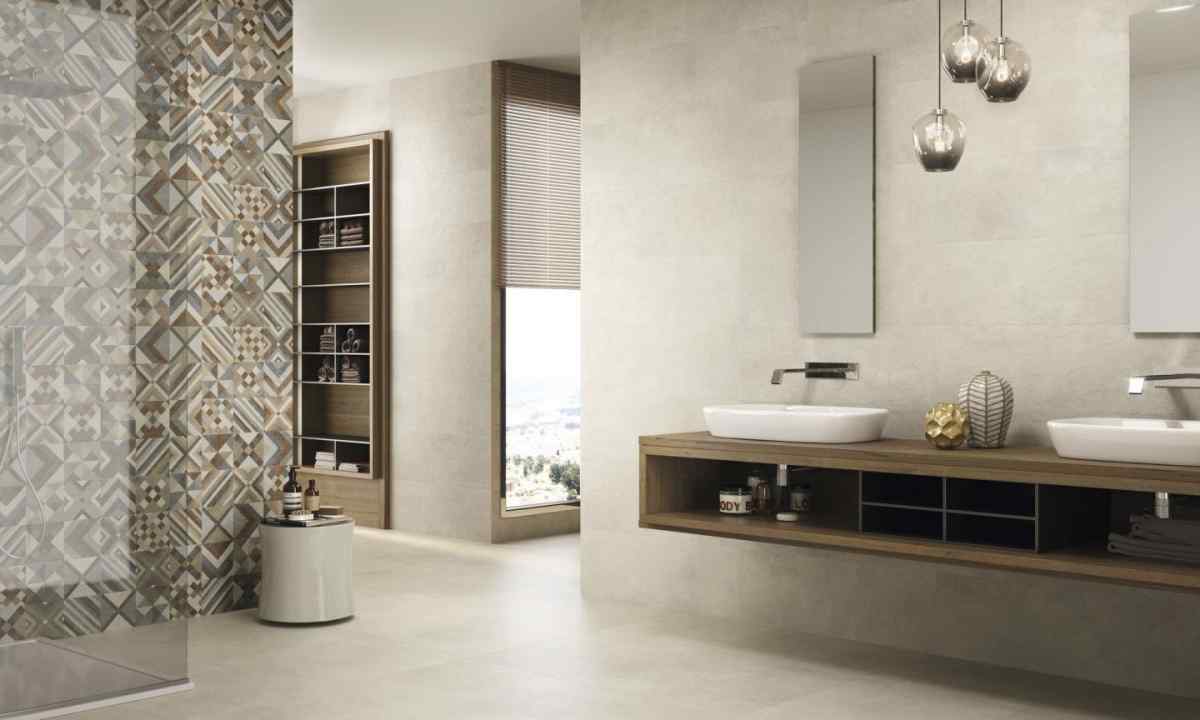The tile from natural materials is applied in construction from extreme antiquity. Thanks to the universality, such roofing material can combine antique motives and modern approaches to design. The tile is ideal for registration of old buildings, but can be applied also when finishing buildings in hi-tech style. What type of natural tile to prefer: ceramic or integral and sand?
Advantages of natural tile
The natural tile throughout long time keeps the high status, being considered as standard among other roofing materials. It is accepted to divide it into two views: on ceramic and integral and sand. The last look usually contains cement in the structure therefore such tile more often is called cement and sand. Both views are very similar in the form, differing mainly in only thickness of elements.
Tile of ceramic type thinner, and its cement and sand analogs have big thickness.
One more difference of cement and sand tile is that its edge is chopped a little off. Modern producers of construction materials have worked at elimination of such shortcoming, having marketed tile with the rounded edges. Such processing gives to tile more esthetic look.
In the European construction market the natural types of tile are more demanded, than their metal analogs and other roofing materials. For this reason the main producers of cement and sand and ceramic tile are located in Europe where every second roof is covered with this natural roofing material. The advantage of each type of natural tile can be considered her nonsensitivity to aggressive influence of the external environment. It is resistant not only to frost, heat, strong wind, but also resists to harmful activity of the lowest plants and bacteria. Even ultra-violet radiation does not affect structure of natural tile. Both the ceramic, and cement and sand tile is quite practical material which is capable to maintain high mechanical loadings. Ranks of the elements making roofing covering form flexible and elastic "carpet" which adapts to any roof, smoothing its defects and errors. Therefore at small deformations of the building, for example, as a result of natural shrinkage, the tile roof continues to perform the function.
Features of manufacturing techniques
Both types of natural tile are rather difficult in production. It is interesting that even after emergence of specialized factories and conveyor production the tile continues to be produced manually in small craft workshops. For many years existence of such production the technology of development of tile has almost not undergone changes. The initial material as which normal clay served earlier passes through stages of preparation of raw materials, molding of elements, roasting of ceramics or drying of integral and sand tile. But there are essential differences in the course of production of each of two types. At production of ceramic tile the pug clay is kneaded to uniform state. Gradually add various softeners to structure of this weight that facilitates process of forming of finished product. Direct production of ceramic tiles is conducted in the tape way or by means of stamping. In one case at first create tile tape which is cut on elements subsequently, and in another separately give each tile under press.
Roasting at high temperature completes process of production of ceramic tile.
Production of integral and sand tile is significantly simpler what does finished product to cheaper. In the beginning I do the moist weight to which add dyes of water, cement and quartz sand. Then crude preparations are produced by tape way. The tile raw about day is dried at low temperature, and then not less than a month it is stood in warehouse. It is necessary in order that cement and sand mix has gained necessary durability.
Differences in color gamma
The color schemes inherent to ceramic tile include shades of brown and red colors that corresponds to natural shades of the burned clay. Usually producers do without addition of dyes, and cover finished product with glaze or special solution – engobe. So the surface of tile becomes glossy or opaque. The tile covered with glaze has the increased resistance to moisture, on it dust and dirt almost does not collect. The glazed ceramic surface is pleasing to the eye tidy look and special beauty. When putting engobe which are represented by mix of clay, water and mineral substances it is possible to receive large number of desirable shades. The Angobirovanny ceramics very long does not change the initial color. Color of cement and sand tile entirely is defined by special dyes which before formation give to initial cement slurry. These coloring pigments do not affect resistance to sunshine and product durability at all.
What tile to prefer?
It is easy to make sure that both ceramic, and cement and sand tile are very similar in the properties and are very durable roofing materials. The warranty period for the most qualitative tile reaches up to thirty years and more. Both views well resist to the external environment and are ideal for the houses having penthouses where sunshine strongly heat roof. At the same time the cement and sand tile has more high density and low porosity. It reduces resistance of tile to low temperatures and has negative effect on water permeability. The ceramic tile is in this regard more practical as add special impurity for improvement of formation of closed pores to it. Choosing tile of certain look, pay primary attention to color gamma of the samples provided on sale, conditions of guarantee and reviews of other consumers of the specific brand of roofing material which it is possible to study at the thematic forums devoted to construction.

